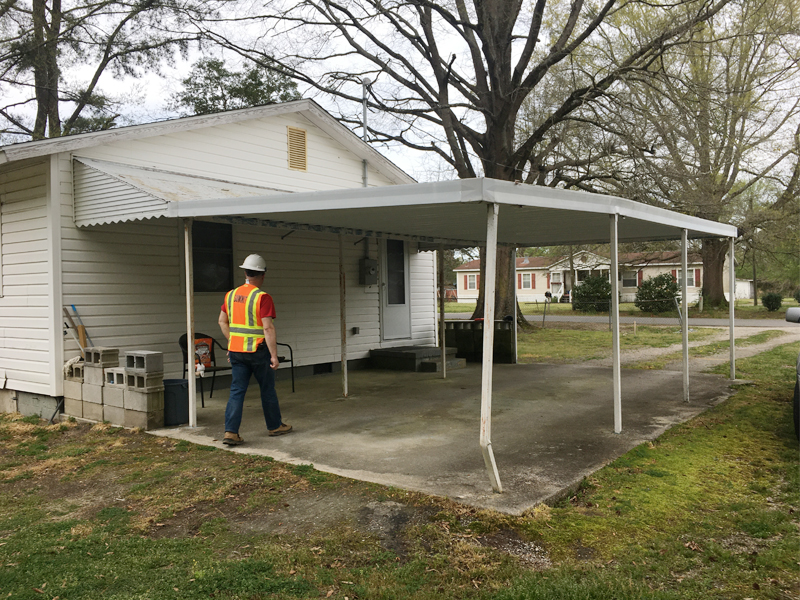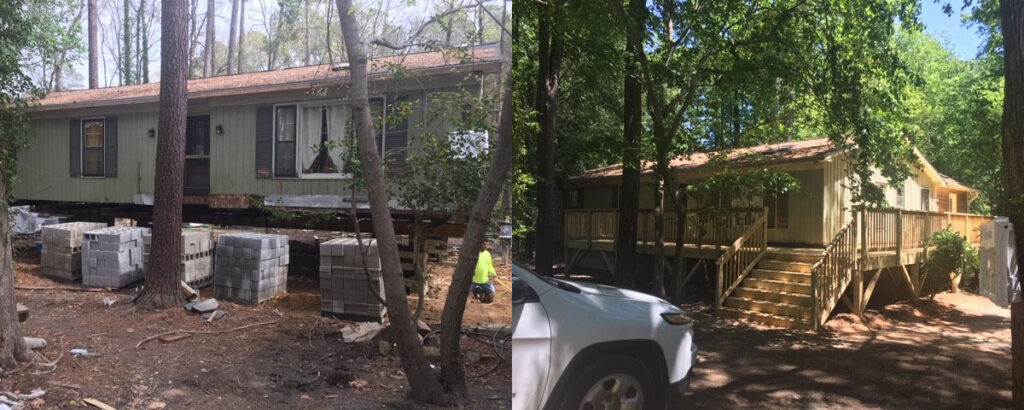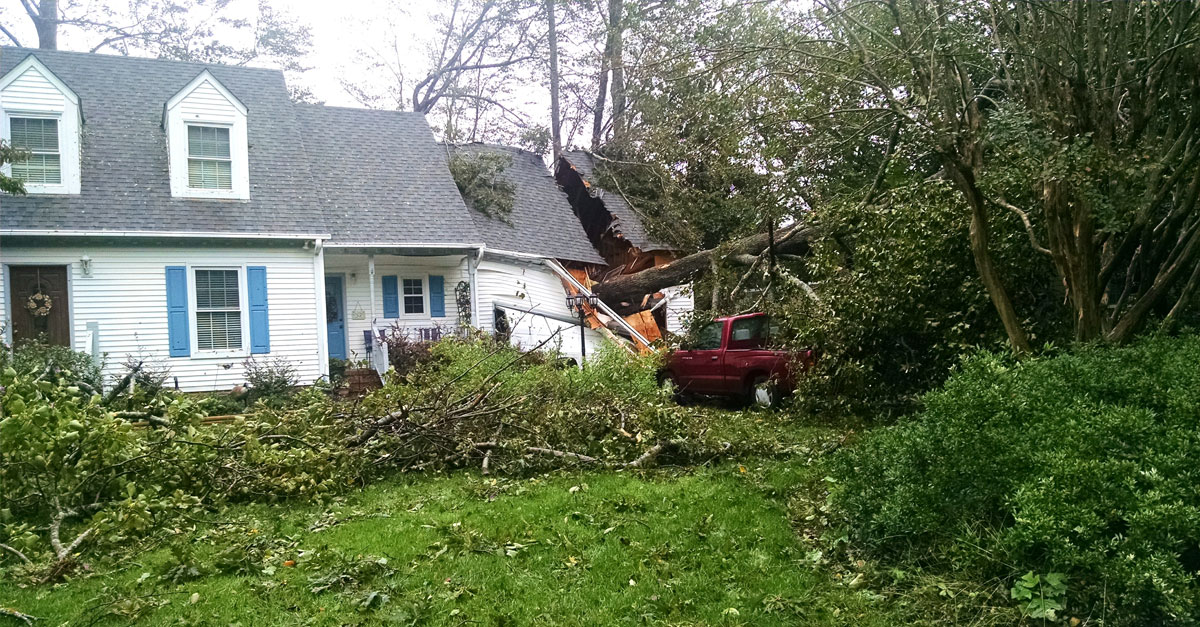In this series so far, we have explained two major effects of hurricanes, debris, and stormwater and how engineers and planners work to mitigate those effects. Another effect of hurricanes is physical damage to residences and homes.
Hurricane Ian
Last month, Hurricane Ian devastated Cuba and Florida, continuing to impact millions more across the Southeast. Category 4 winds and flooding took a tragic toll, causing nearly $67 billion in damages on top of an estimated 140 fatalities. As the storm has come and gone, and much of the flooding has receded, we are still left with one of the most far-reaching impacts of hurricanes: physical damage to residences and homes.
Once the debris is removed and the floodwater has withdrawn, how will those affected rebuild their homes and communities? Where do the funds for this costly process come from? A couple of possible answers are the Community Development Block Grant (CDBG) and Hazard Mitigation Grant Program (HMGP), both of which provide assistance to communities seeking to structurally enhance and elevate homes that are damaged and/or in need of relocation.
What is the CDBG, and how does it come into play after a hurricane?
Community Development Block Grants (CDBG)
Community Development Block Grants are provided to state and local governments by the U.S. Department of Housing and Urban Development. These grants must be used to strengthen and rebuild communities, including community facilities and utility infrastructure improvements that may not necessarily be storm related. As a recent example, CDBG funds were used to help communities that experienced significant economic decline as a result of the COVID-19 pandemic.
CDBG Application
After a hurricane, one would apply for a CDBG-Disaster Recovery grant. This version of the grant is specifically intended to help communities rebuild in the aftermath of a natural disaster, most commonly hurricanes, tornados, earthquakes, and wildfires. Our planning team specializes in locating and applying for grant opportunities, as well as assisting in administering the funds once awarded, a process that requires specialized knowledge and patience.
Once the grant has been issued, engineers and architects jump into action, assessing the damage to individual properties and determining the best way to address all needs. Repairs and replacements can then be designated, and construction can begin soon thereafter. The planning process is one that Summit has contributed to in the past, helping to design affordable housing plans for families forced to start over after losing their home to a disaster.
Our firm has assisted with the successful application and implementation of more than 200 projects totaling in excess of $180,000,000 in CDBG funding. Project scopes and community needs may vary, but there is always an opportunity to help people recover from a disaster like Hurricane Ian. Summit is proud to be part of an industry that can do so much good.
What is the HMGP and how does it assist in post-hurricane recovery?
Hazard Mitigation Grant Program (HMGP)
The Hazard Mitigation Grant Program provides grants via FEMA, the Federal Emergency Management Administration. Ten days after Hurricane Ian was declared a major disaster in Florida, FEMA approved $150 million in grants to more than 100,000 households to aid in the recovery effort. This means that FEMA is one of the primary organizations footing the bill for natural disasters and they present great opportunities for HMGP grants.
What HMGP Grants Focus On
While CBDG Disaster Recovery grants pay for repairs and efforts to rebuild, HMGP grants focus on lessening the damage that will be inflicted by future disasters. This is done through long-term programs that make structures and families more resilient. Even if the money is tied to a particular disaster, the grant may be budgeted years after the event has passed. Typically, these programs focus on previously flooded homes located in flood plains.
The mitigations are voluntary on the part of the homeowner, and can take two forms:
-
- Acquisitions: the municipality holding the grant buys the homeowner out of their property at market value, allowing them to relocate to a less flood-prone area. Once the home is demolished, the property is typically used as open or park space.
- Elevations: the home is physically raised and placed upon a new foundation. The new floor elevation is at least two feet above the flood line.
A Planners Crucial Role
Again, planners play a crucial role in acquiring and administering these grants. Once the money is made available, engineers and surveyors take over paving the way for acquisitions, as well as designing the elevations. In the past decade, Summit has assisted local governments across Virginia in the successful implementation of over 24 projects related to disaster mitigation, totaling over $23 million in FEMA funding. Natural disasters are a regular occurrence, and there’s no shortage of work that can be done to help minimize the damage they will do to homes.
Click here to read more about our work assisting Gloucester County in completing a Disaster Mitigation Recovery Plan.
What can be done to reinforce homes in at-risk areas?
Assessing Homes
When it comes to securing grants after a disaster, planners are the star of the show. However, getting out in the field and doing the work is when structural engineers take the spotlight. They visit each home to assess its condition and confirm details regarding the residence’s foundation type and layout. This work helps determine if elevation is possible.

Surveyor’s Role
Surveyors are also involved in this process, visiting lots to ascertain boundaries and encroachments as well as to establish the current elevation and BFE (Base Flood Elevation). Per FEMA, BFE is the elevation that surface water will rise to in the event of a flood that has a 1% chance of equaling or exceeding the elevation in a given year. To put it simply, a house above it’s BFE is prepared for all but the most severe, “two-of-every-animal-on-an-ark” kind of flood.
From here, designs are prepared for a house mover to raise the house, demolish the foundation, and construct a new one that is taller and stronger. The home is now protected from rising flood waters and wind damage.
Our HMGP Experience
Summit performed this work for the HMGP program in and around the Town of Princeville in Edgecombe County. The town, which lies low on the banks of the Tar River and experiences regular flooding, has seen conditions worsened by the effects of climate change. The program lifted as many as 90 homes to new foundations, which are between two and ten feet higher than their previous elevation.
Why is this work so important?
As engineers and architects, we are used to completing projects to improve the places where people drive, live, work, shop, learn, relax, and worship. It goes without saying how important it is for families to have a secure place to call home.
Hurricane Ian is a reminder that there are few things more unsettling than the loss of one’s home and the fear and insecurity that comes with it. While CDBG and HMGP projects are not the most visible or glamorous projects around, the satisfaction of meeting a family in crisis and helping repair, replace, or strengthen their living space makes hurricane recovery one of the most rewarding project types for us.

Before (left) and After (right) of a home located in Carrboro, N.C.
